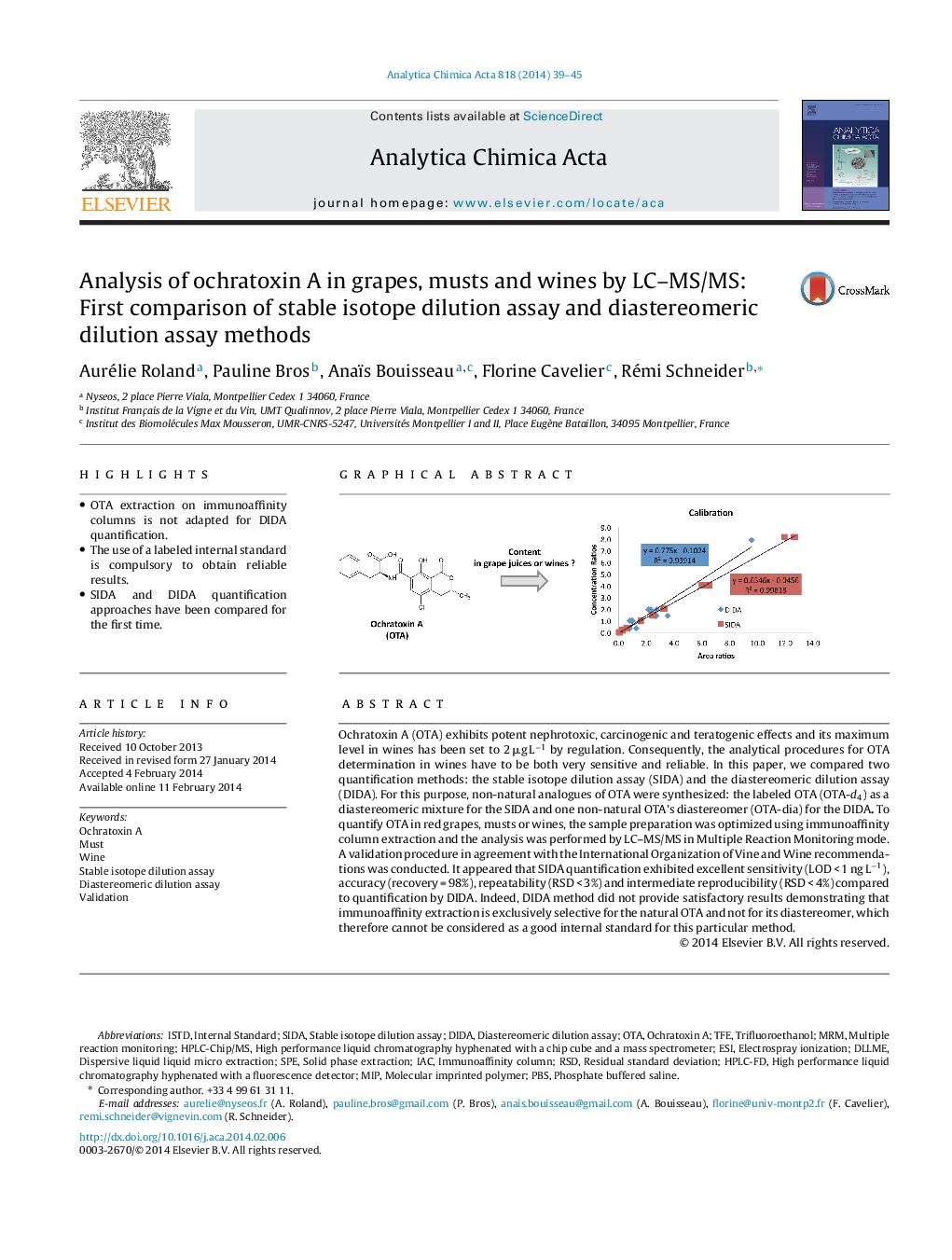| Article ID | Journal | Published Year | Pages | File Type |
|---|---|---|---|---|
| 1164871 | Analytica Chimica Acta | 2014 | 7 Pages |
•OTA extraction on immunoaffinity columns is not adapted for DIDA quantification.•The use of a labeled internal standard is compulsory to obtain reliable results.•SIDA and DIDA quantification approaches have been compared for the first time.
Ochratoxin A (OTA) exhibits potent nephrotoxic, carcinogenic and teratogenic effects and its maximum level in wines has been set to 2 μg L−1 by regulation. Consequently, the analytical procedures for OTA determination in wines have to be both very sensitive and reliable. In this paper, we compared two quantification methods: the stable isotope dilution assay (SIDA) and the diastereomeric dilution assay (DIDA). For this purpose, non-natural analogues of OTA were synthesized: the labeled OTA (OTA-d4) as a diastereomeric mixture for the SIDA and one non-natural OTA’s diastereomer (OTA-dia) for the DIDA. To quantify OTA in red grapes, musts or wines, the sample preparation was optimized using immunoaffinity column extraction and the analysis was performed by LC–MS/MS in Multiple Reaction Monitoring mode. A validation procedure in agreement with the International Organization of Vine and Wine recommendations was conducted. It appeared that SIDA quantification exhibited excellent sensitivity (LOD < 1 ng L−1), accuracy (recovery = 98%), repeatability (RSD < 3%) and intermediate reproducibility (RSD < 4%) compared to quantification by DIDA. Indeed, DIDA method did not provide satisfactory results demonstrating that immunoaffinity extraction is exclusively selective for the natural OTA and not for its diastereomer, which therefore cannot be considered as a good internal standard for this particular method.
Graphical abstractFigure optionsDownload full-size imageDownload as PowerPoint slide
